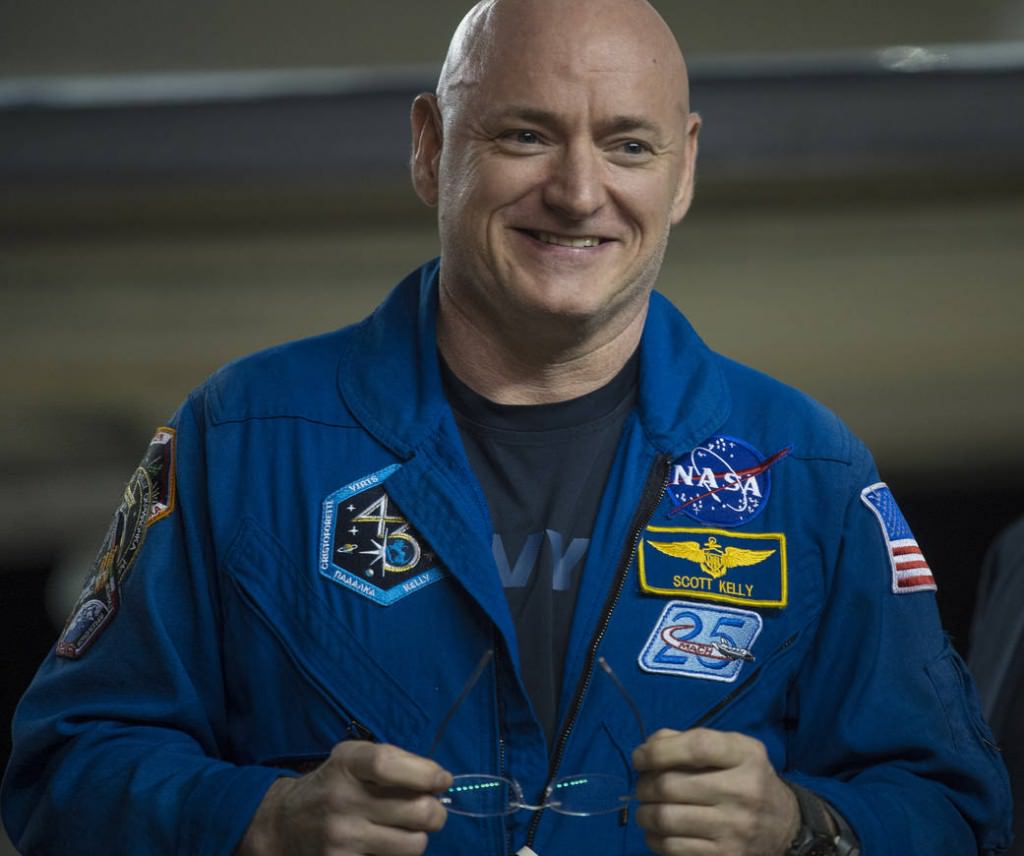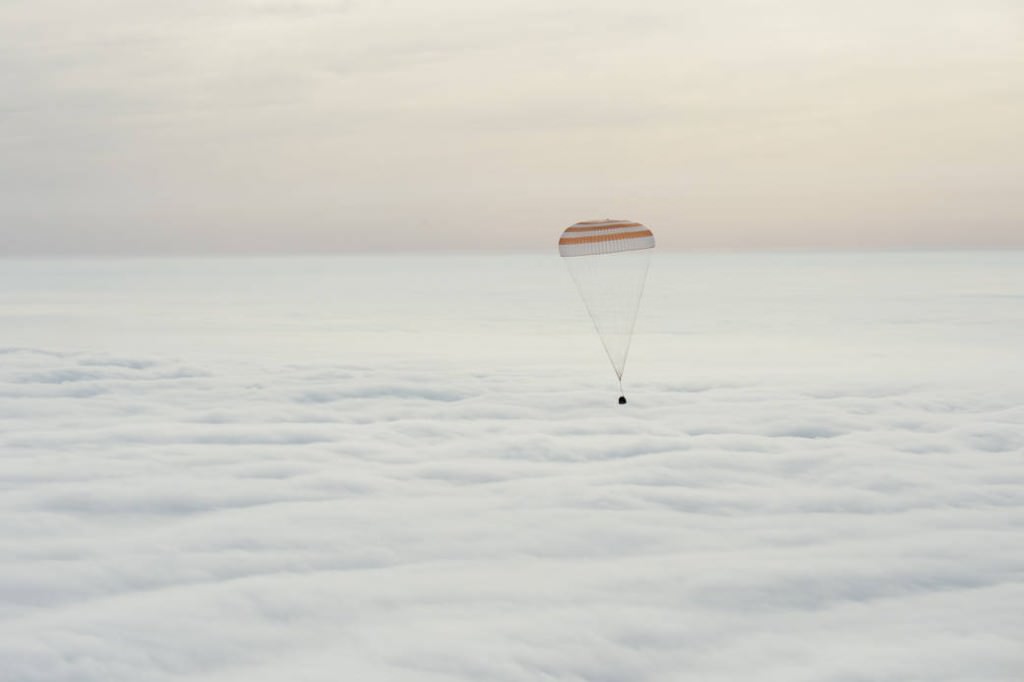In 1996, something remarkable happened at NASA. Twin brothers Mark and Scott Kelly were accepted into NASA; Mark as a shuttle pilot, and Scott into technical operations on the ground, at least initially. Eventually, both brothers became astronauts. They are the only siblings to have both been in space.
Whether it was intentional or not, having twin brothers gave NASA an important opportunity. They could use one twin as a control group, and send the other on a prolonged mission into space. That allowed NASA to carry out important research on the effects of space travel on the human body.
In March 2016, Scott Kelly returned from a year long (340 days) mission aboard the International Space Station, while his brother Mark stayed on Earth. Genetic samples were taken from each brother before and after Scott's time aboard the ISS. Now, NASA has released the preliminary results of this unprecedented opportunity.

Expedition 46 Commander Scott Kelly of NASA is seen after returning to Ellington Field, Thursday, March 3, 2016 in Houston, Texas after his return to Earth the previous day. Kelly and Flight Engineers Mikhail Kornienko and Sergey Volkov of Roscosmos landed in their Soyuz TMA-18M capsule in Kazakhstan on March 1 (Eastern time).
NASA's Human Research Program did the study, and the results were released at their Investigator's Workshop on the week of January 23rd. The theme of that workshop was A New Dawn: Enabling Human Space Exploration. Though the studies are on-going, these initial results are interesting.
Omics
Mike Snyder, who is the Integrated Omics investigator, reported his findings. He found an altered level of lipids in Scott, the flight twin, which indicates inflammation. He also found increased 3-indolepropionic (IPA) in Mark, the ground twin. IPA is a potential brain antioxidant therapeutic, and also helps maintain normal insulin levels, to stabilize blood sugar after meals.
Telomeres and Telomerase
Telomeres and Telomerase are part of the chromosomal system in the human body. Susan Bailey reported that for Scott, the flight twin, the length of his white blood cell's telomeres increased while in space. Typically, they decrease as a person ages. Once on Earth, they began to shorten again.
Telomerase, an enzyme that repairs telomeres, increased in both brothers in November, which could be related to a stressful family event at that time.

The Soyuz TMA-18M spacecraft is seen as it lands with Expedition 46 Commander Scott Kelly of NASA and Russian cosmonauts Mikhail Kornienko and Sergey Volkov in Kazakhstan on Wednesday, March 2, 2016. Photo Credit: (NASA/Bill Ingalls)
Cognitive Performance in Spaceflight
Mathias Basner is studying Cognitive Performance in Spaceflight, especially the difference in cognition between a 12-month mission and a six-month mission. Though he found a slight decrease in speed and accuracy after the mission, he found no real difference in cognition between 6 month and 12 month missions.
Biochemistry
Scott Smith's investigation into biochemistry showed a decrease in bone density during the second half of Scott's mission. Scott also had increased levels of a biochemical marker for inflammation once he returned to Earth.
Microbiome in the Gastro-Intestinal Tract
Fred Turek reported preliminary results of his investigation into the bacteria in the GI (microbiome) tract that help digestion. There were many differences in the twins' biomes, but that was expected because of their different diets and environments. There were interesting differences in Scott's biome between his time in space and his time on the ground. The ratio between two dominant bacterial groups shifted during his flight time compared to his ground time.
Immunome Studies
Emmanuel Mignot investigated changes in the bodies of both twins before and after a flu vaccine was given. Both twins showed increased levels of T-cell receptors after the vaccine, which was the expected immune response.
Genome Sequencing
Chris Mason is performing Genome Sequencing on the DNA and RNA contained within the twins' white blood cells with his investigation. RNA sequencing showed that over 200,000 RNA molecules were expressed differently between the twins. Mason will look closer to see if a "space gene" could have been activated while Scott was in space.
Epigenomics
Andy Feinberg studies how the environment regulates our gene expression, which is known as epigenomics. Scott's white blood cell DNA showed decreased levels of chemical modification while in flight, and a return to normal once back on Earth. The same level in Mark (the ground twin) increased midway through the study, but then returned to normal. There was variability between the twins, called epigenetic noise. This noise was higher in Scott during his spaceflight, and returned to baseline levels once back on Earth. This could indicate that some genes are more sensitive to the changing environment of spaceflight than others.
There's a lot more research required to truly understand these results. Once they're looked at in coordination with other physiological, psychological, and technological investigations, the picture will become clearer. Later in 2017, there will be a joint publication of further results, as well as individual research papers.
NASA's goal is to make space travel safer for astronauts, and to make missions more effective and efficient. With all the talk of missions to Mars in the next decade, these results are arriving at the perfect time.
No comments:
Post a Comment